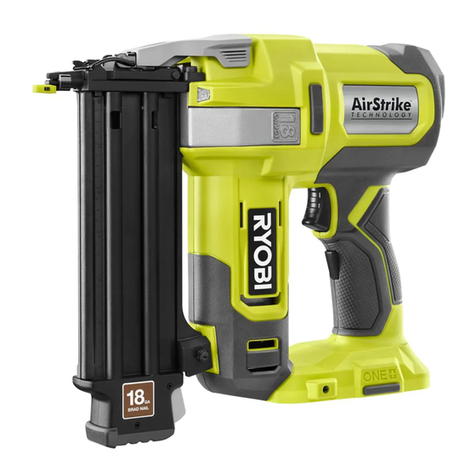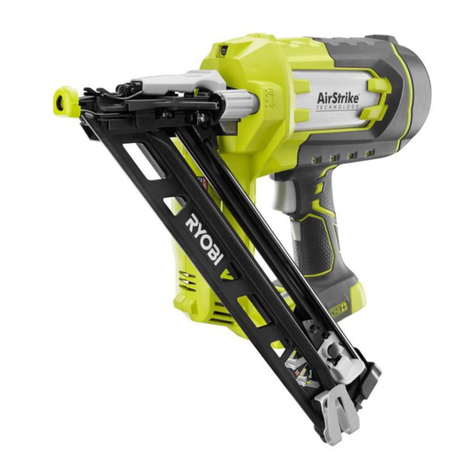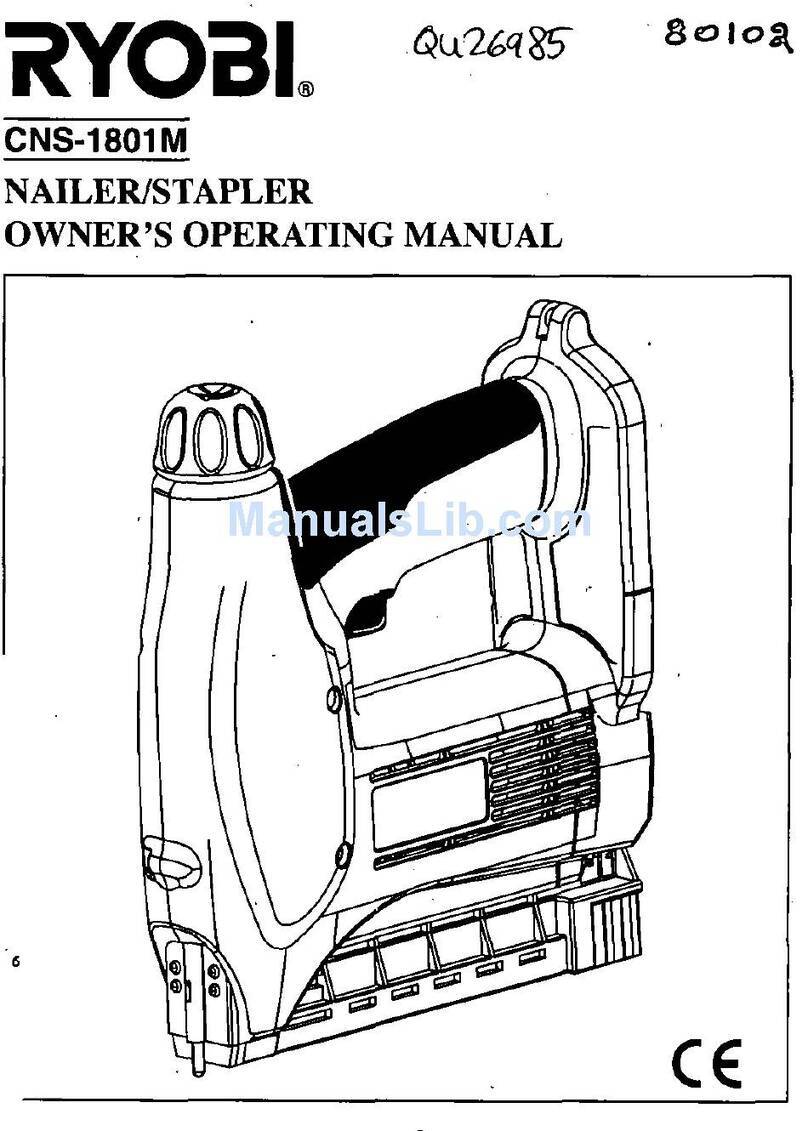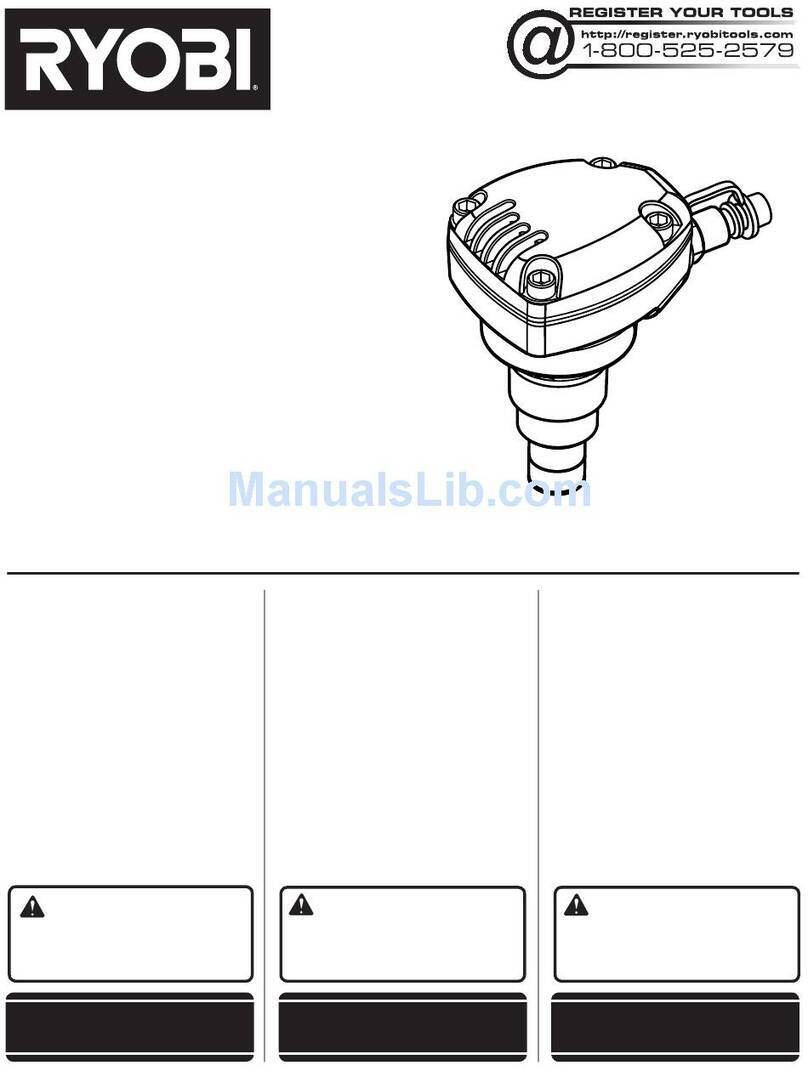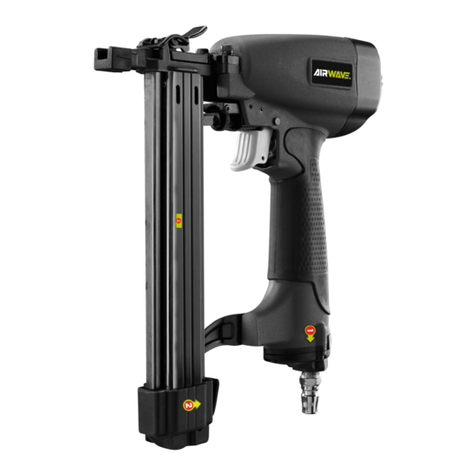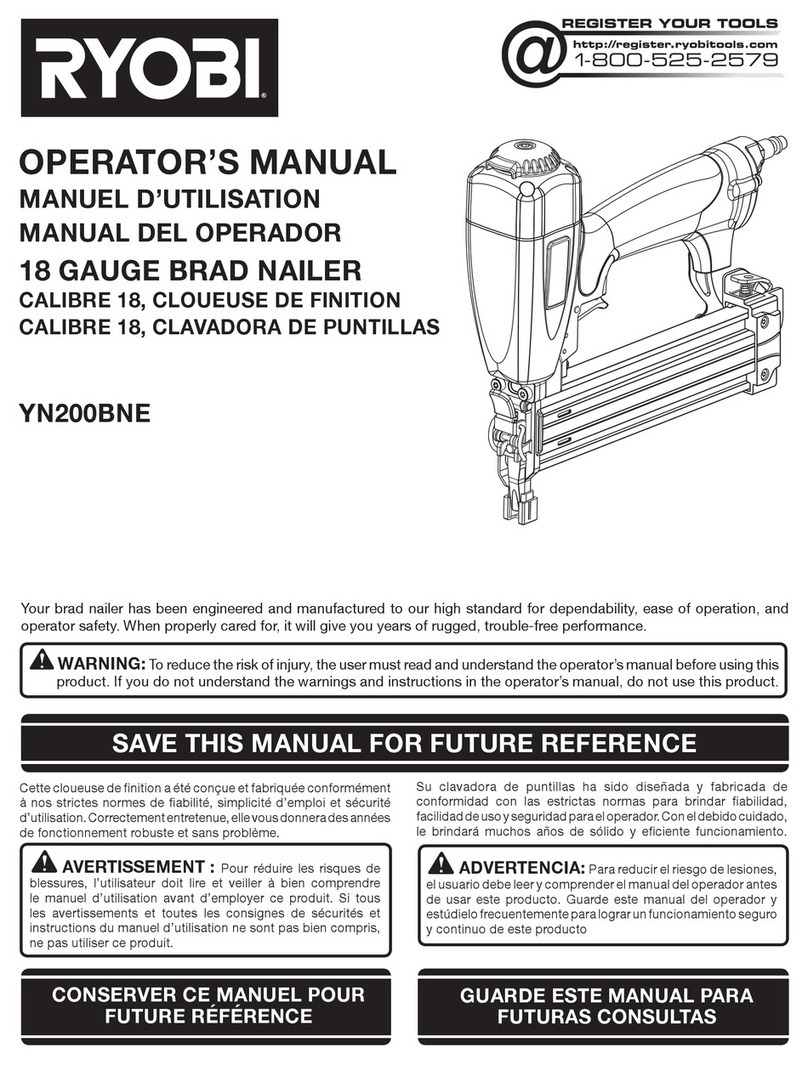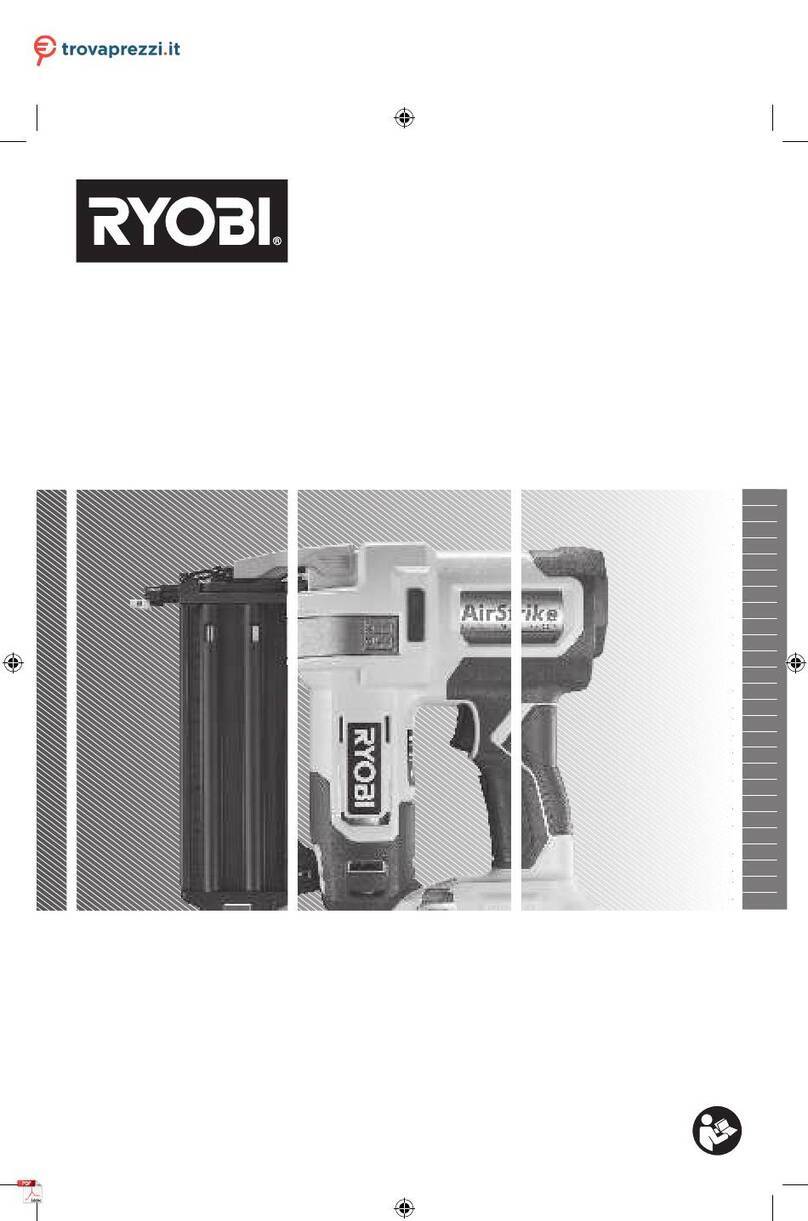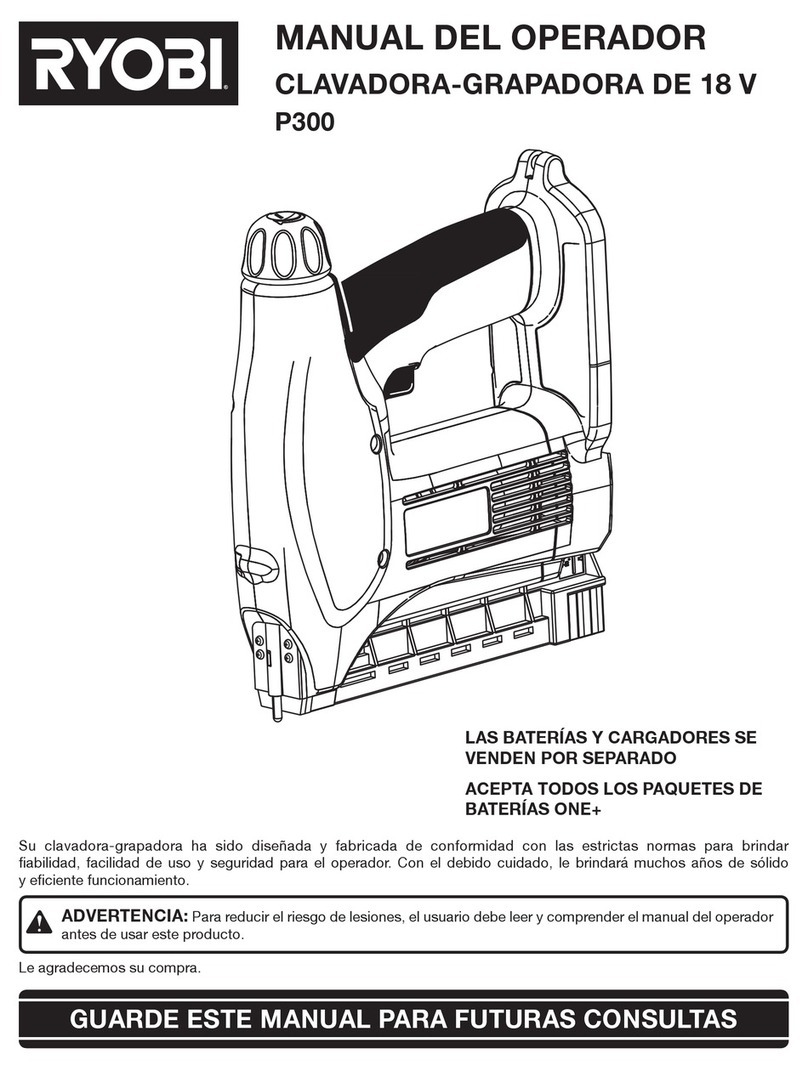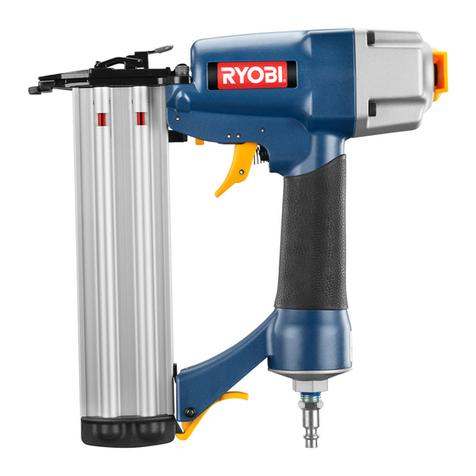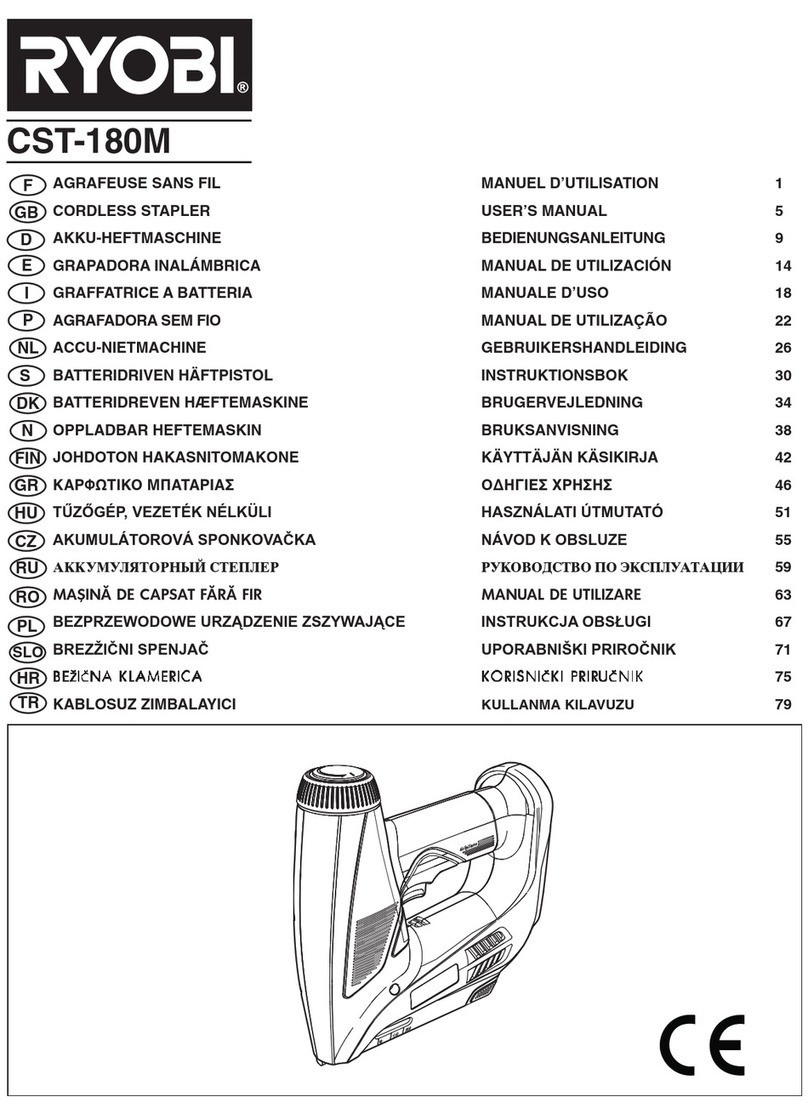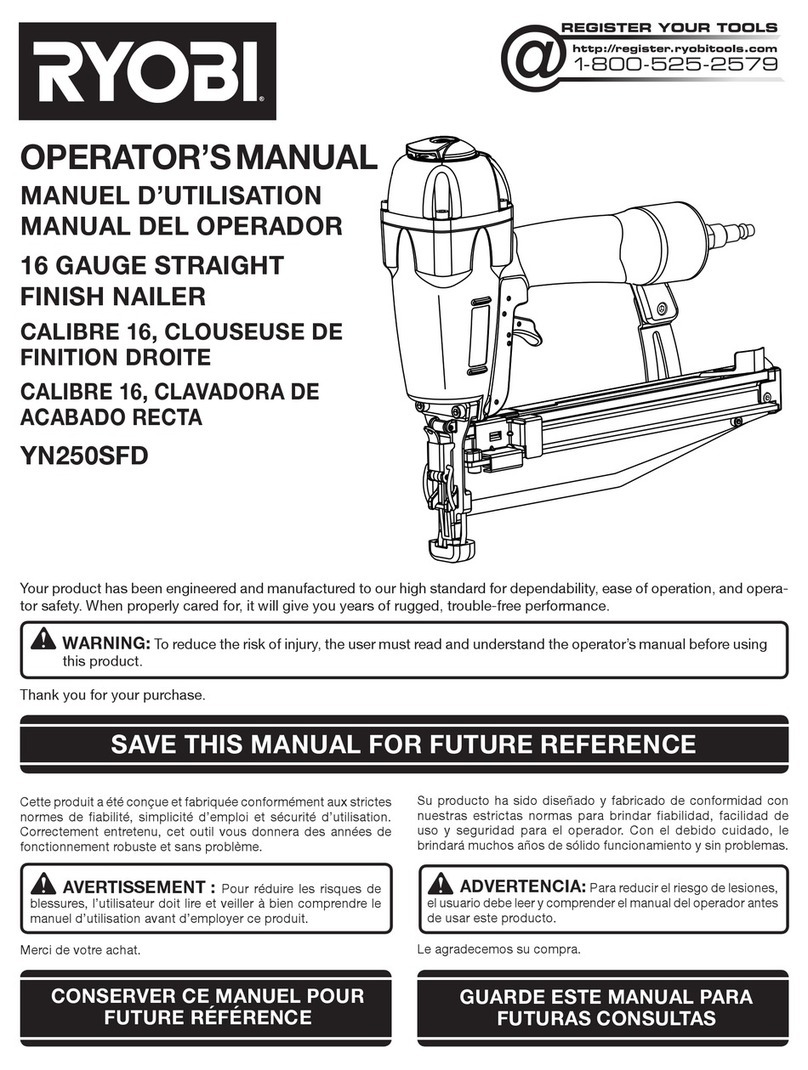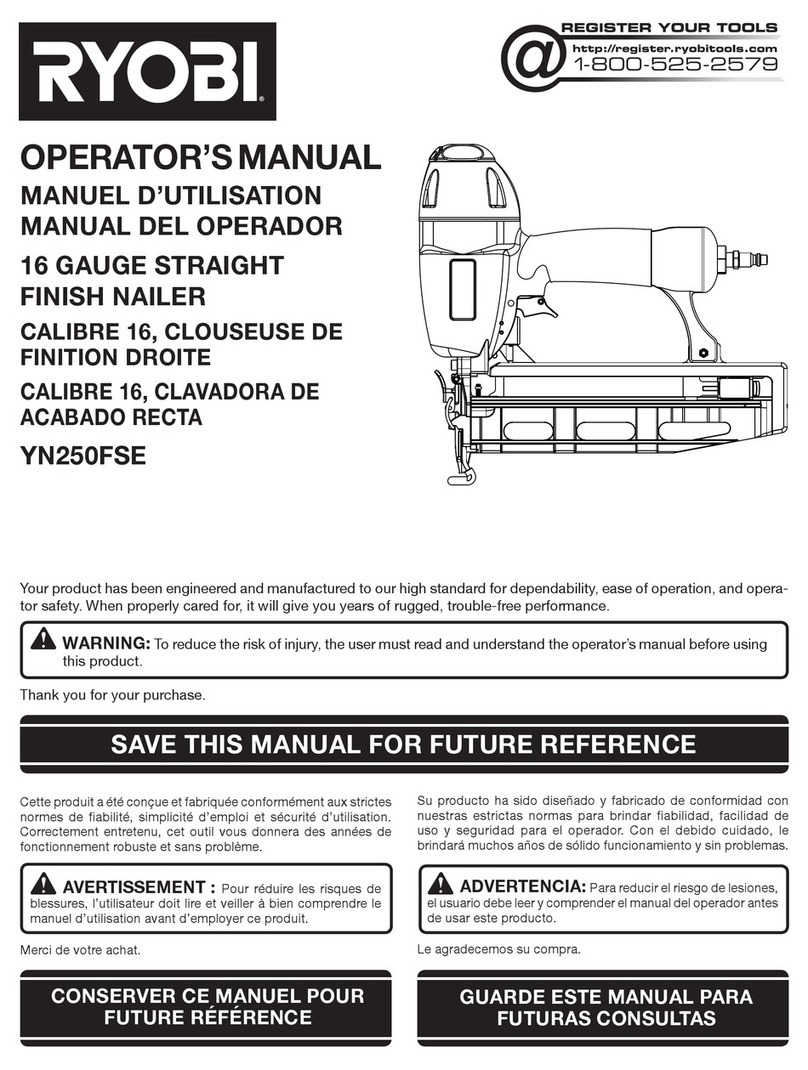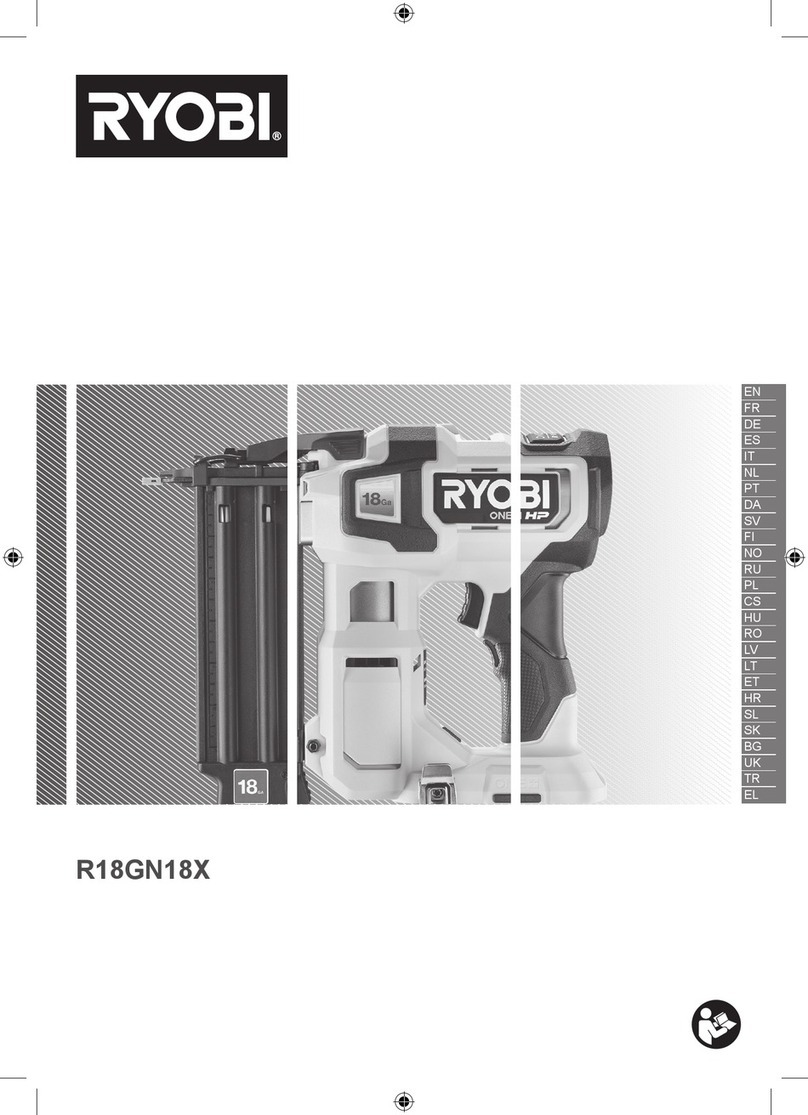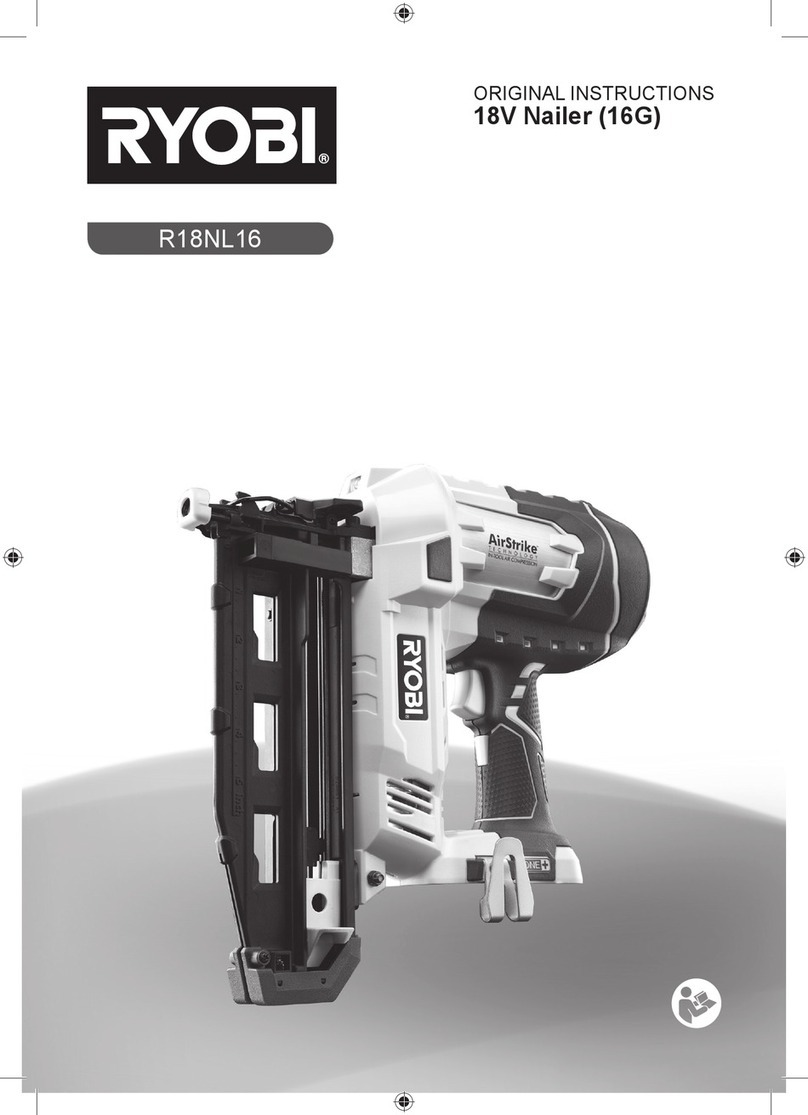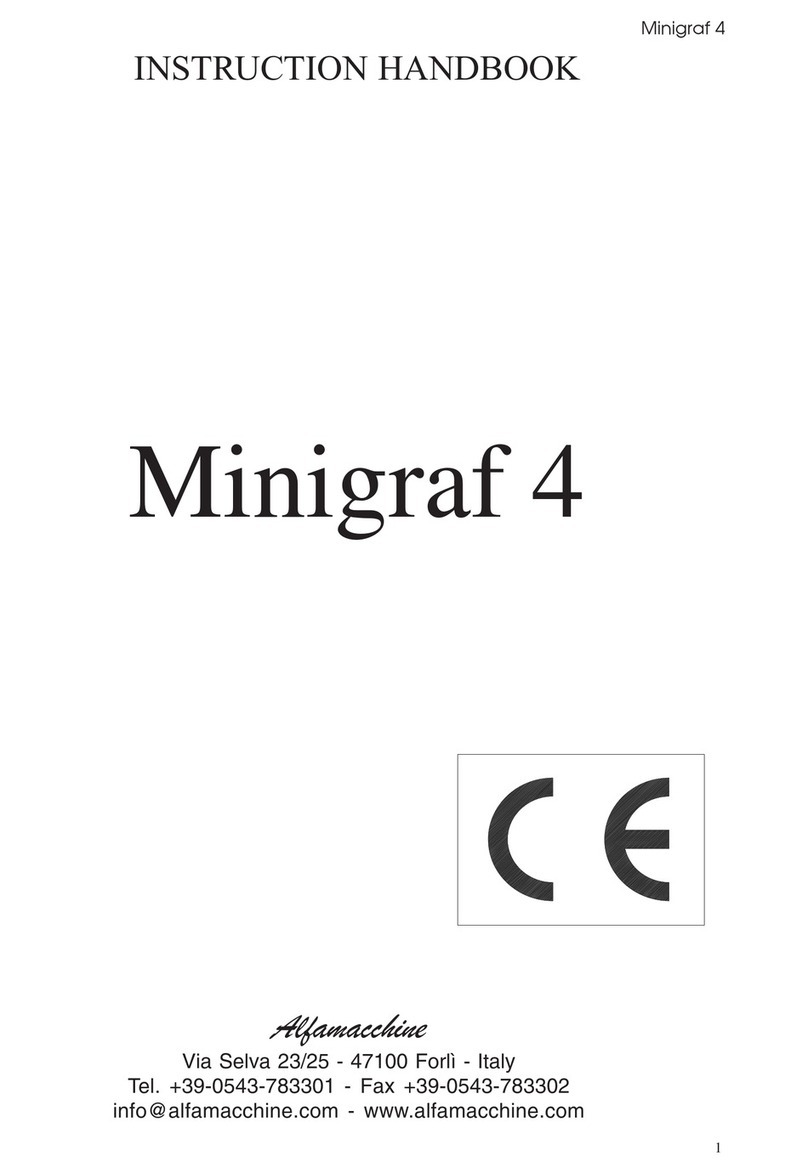Safety
5
The mechanism may be under compression and the
fastener may be forcefully discharged while attempting
to free a jammed condition.
■Do not use this nailer for fastening electrical cables.
It is not designed for electric cable installation and
may damage the insulation of electric cables thereby
causing electric shock or fire hazards.
ADDITIONAL SAFETY WARNINGS
■Always be aware that misuse and improper handling of
this tool can cause injury to yourself and others.
■The tool is designed for single-hand use. Do not hold
the tool by the front of the magazine. Do not put hands,
head, or other parts of your body near the bottom of
the magazine where the nail exits the tool, as serious
personal injury could be caused.
■Always ensure that the workpiece contact is fully
positioned above the workpiece. Positioning the
workpiece contact only partially above the workpiece
could cause the nail to miss the workpiece completely
and result in serious personal injury.
■Do not drive nails near edge of material. The workpiece
may split causing the nail to ricochet, injuring you or a
coworker. Be aware that the nail may follow the grain of
the wood, causing it to protrude unexpectedly from the
side of the work material or deflect, possibly causing
injury.
■Keep hands and body parts clear of immediate work
area. Hold workpiece with clamps when necessary to
keep hands and body out of potential harm. Be sure
the workpiece is properly secured before pressing the
fastener against the material. The workpiece contact
may cause the work material to shift unexpectedly.
■Keep face and body parts away from back of the tool
cap when working in restricted areas. Sudden recoil
can result in impact to the body, especially when nailing
into hard or dense material.
■During normal use the tool will recoil immediately after
driving a fastener. This is a normal function of the tool.
Do not attempt to prevent the recoil by holding the nailer
against the work. Restriction to the recoil can result in
a second fastener being driven from the nailer. Grip
the handle firmly, let the tool do the work and do not
place second hand on top of tool or near exhaust at any
time. Failure to heed this warning can result in serious
personal injury.
■Do not drive fasteners on top of other fasteners or with the
tool at an overly steep angle as this may cause deflection of
fasteners which could cause injury.
■Always check the work area for hidden wiring, gas lines,
water lines, etc., before using the product on such work
area.
■The driving depth of the nail may be adjusted beyond
air pressure. It is advisable to test the depth on a scrap
workpiece to determine the required depth for the
application.
■Only fasteners matching the description in the product
specification table can be used with this tool. Using
incorrect fasteners may lead to jamming or other
malfunctions.
■Use battery only with charger listed. For use with
18V nickel-cadmium and 18V lithium-ion battery packs,
see tool/appliance/battery pack/charger correlation
supplement 987000-432.
■Do not wear loose clothing or jewellery. Contain
long hair. Loose clothes, jewellery, or long hair can be
drawn into air vents.
■Do not use on a ladder or unstable support. Stable
footing on a solid surface enables better control of the
power tool in unexpected situations.
■Hold power tool by insulated gripping surfaces,
when performing an operation where the nail may
contact hidden wiring. Nails contacting a “live” wire
may make exposed metal parts of the power tool “live”
and could give the operator an electric shock.
■Know your power tool. Read operator’s manual
carefully. Learn its applications and limitations, as
well as the specific potential hazards related to this
power tool. Following this rule will reduce the risk of
electric shock, fire, or serious injury.
■Always wear eye protection with side shields
marked to comply with ANSI Z87.1. Everyday
glasses have only impact resistant lenses. They are not
safety glasses. Following this rule will reduce the risk of
serious personal injury.
■Eye protection which conforms to ANSI
specifications and provides protection against
flying particles both from the front and side should
always be worn by the operator and others in the
work area when loading, operating or servicing this
tool. Eye protection is required to guard against flying
fasteners and debris, which could cause severe eye
injury.
■The employer and/or user must ensure that proper
eye protection is worn. We recommend Wide Vision
Safety Mask for use over eyeglasses or standard safety
glasses that provide protection against flying particles
both from the front and side. Always use eye protection
which is marked to comply with ANSI Z87.1.
■Additional safety protection will be required in
some environments. For example, the working area
may include exposure to noise level which can lead to
hearing damage. The employer and user must ensure
that any necessary hearing protection is provided and
used by the operator and others in the work area. Some
environments will require the use of head protection
equipment. When required, the employer and user
must ensure that head protection conforming to ANSI
Z89.1-1997 is used.
■Keep fingers away from trigger when not driving
fasteners to avoid accidental firing.
■Use safety equipment. Always wear eye protection.




